Project Evaluation Definition and Process
How to Estimate Project: Time, Cost and Resources. Techniques & Types for Accurate Planning
Project estimation is the process of predicting the time, resources, and costs required to complete a project. It involves analyzing the project's scope, objectives, and requirements to determine the effort needed for successful execution.
This estimation is critical as it forms the basis for project planning, budgeting, and scheduling. Accurate project estimation ensures that stakeholders have realistic expectations, resources are allocated efficiently, and potential risks are identified and managed early. It helps in setting achievable goals, controlling project costs, and delivering the project within the stipulated time frame.
In this article, we unravel the mysteries of project estimation, exploring various techniques and methods to estimate a project.
What Are the Project Estimation Techniques?
Six main project estimation methods are:
- Expert Judgment — the simplest method to estimate a project
- Analogous Estimation — the fastest way to estimate a project
- Parametric Estimation — the most accurate way to estimate a project
- Three-Point Estimation — the most flexible way to estimate a project
- Group Decision-Making — the most collaborative way to estimate a project
- Reserve Analysis — the most prepared method to estimate a project
Let’s break down these types a bit more.
1. Expert Judgment
Expert judgment taps into the knowledge and experience of professionals with significant expertise in a relevant field. During the planning phase, experts help estimate timelines, costs, and resource requirements, contributing to a realistic and achievable project plan.
Selecting the right experts is key. Look for professionals with proven experience and knowledge in the relevant domain. It's also important to ensure their past predictions have been accurate, which can be done by maintaining a performance database.

Benefits of Expert Judgment:
- Depth of Insight: Experts bring deep insights that can uncover potential issues and opportunities that might not be evident through data analysis alone.
- Speed: They can provide quicker insights compared to detailed quantitative methods, which can be time-consuming.
- Flexibility: Expert judgment is flexible and adaptable to various project contexts and stages.
Challenges and Mitigation Strategies:
- Bias and Subjectivity: Use structured techniques like Poker Planning or the Delphi method that described below to minimize bias. Ensure a diverse panel of experts to balance perspectives.
- Overconfidence: Maintain a comprehensive knowledge base to improve the reliability of expert judgments.
- Availability of Experts: Develop a network of experts and maintain good relationships to ensure their availability when needed. Consider remote consultation options to widen the pool of available experts.
- Cost: Engaging top-tier experts can be expensive, but their input can significantly reduce overall project costs by preventing major errors and inefficiencies.
2. Analogous Estimation
Analogous estimating is a technique used to predict the duration, cost, or resources needed for a current project by comparing it to similar past projects. This method leverages historical data and expert judgment to draw parallels and make informed estimates.
The accuracy of analogous estimation depends on the similarity between the current project and the reference project, relying heavily on the experience and judgment of project managers and subject matter experts.
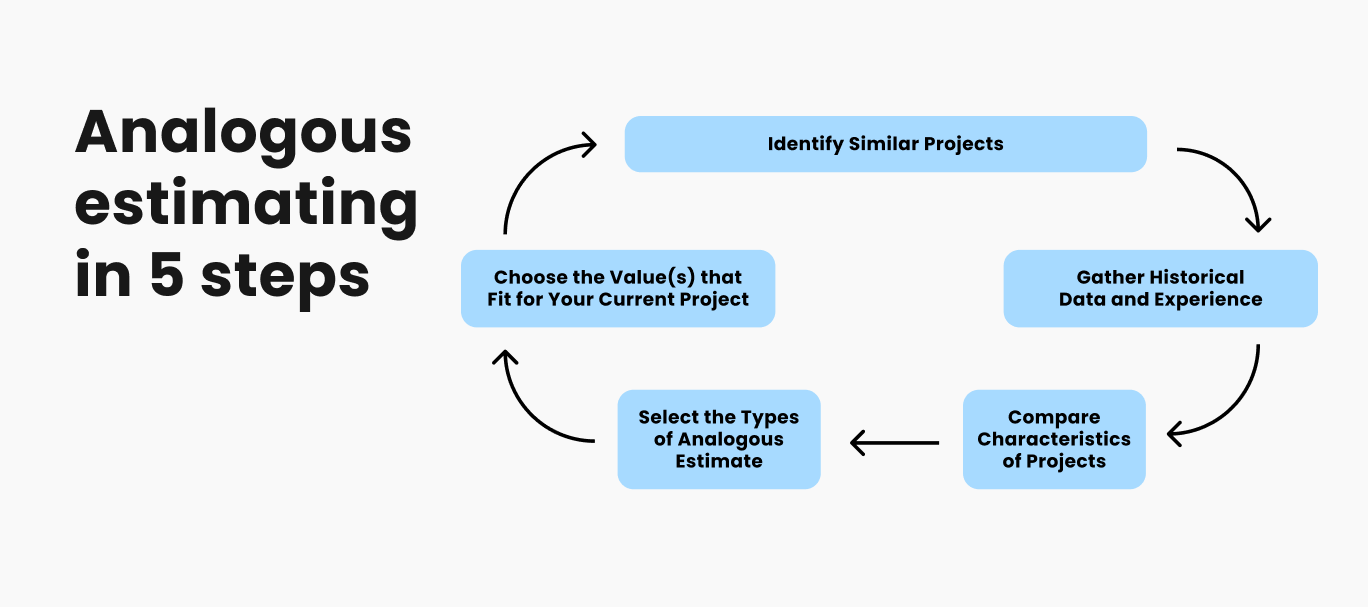
Advantages of Analogous Estimation:
- Speed: Provides rapid estimates, especially valuable in the early stages of project planning.
- Leverage Historical Data: Utilizes knowledge and experiences from previous projects, helping to avoid past mistakes and replicate successes.
Challenges and Mitigation Strategies:
- Dependence on Similarity: Carefully select reference projects and analyze contextual factors. Use multiple analogous projects to increase reliability.
- Subjectivity: Use structured techniques like the Delphi method to gather and refine expert opinions.
- Data Quality: Maintain robust project documentation and regularly update the knowledge base to ensure data accuracy and completeness.
3. Parametric Estimation
Parametric estimating is a quantitative technique that uses statistical relationships between historical data and other variables to estimate project parameters such as cost, time, and resource requirements.
This method is widely applied in various fields due to its ability to provide accurate and reliable estimates. In construction projects, parametric estimation is used for cost and time estimation by considering parameters like square footage, building materials, and labor rates.
This type of estimation is not very common in the IT field. Earlier, parameters such as number of code lines were used but soon it turned out inefficient. However, in IT, there are similar concepts in the Scrum methodology, such as velocity and story points.
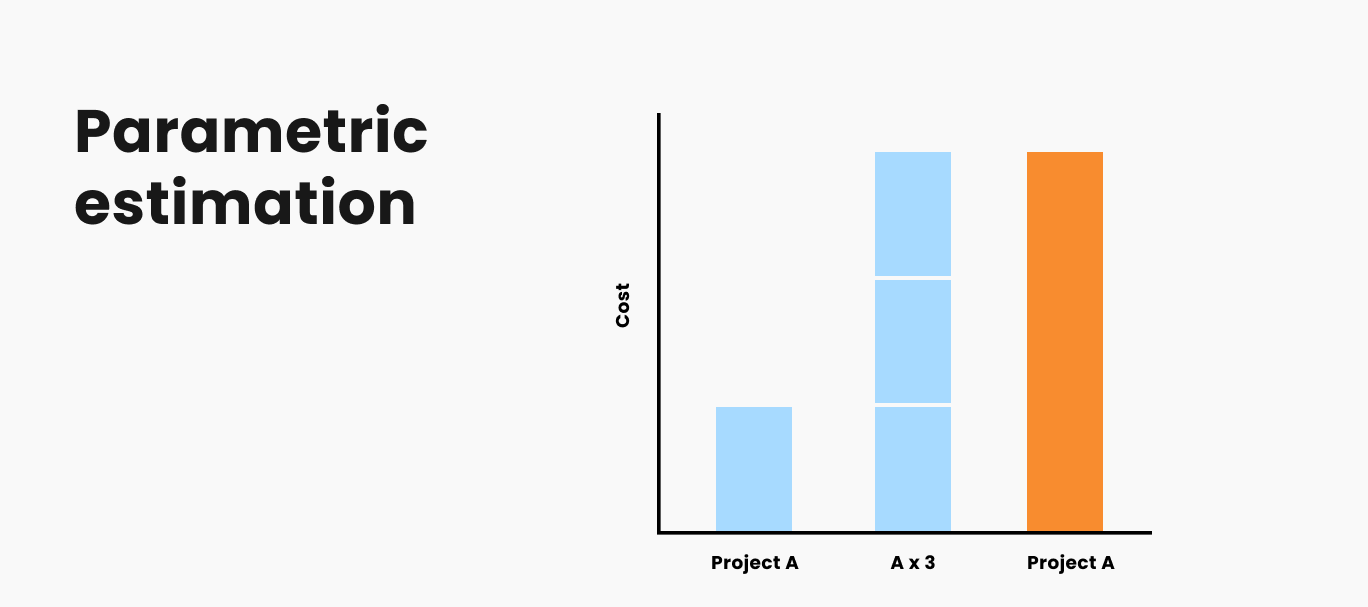
Advantages of Parametric Estimation:
- Accuracy and Precision: Enhances the accuracy and precision of estimates through historical data and statistical models.
- Efficiency: Once developed, models can quickly generate estimates, saving time and effort.
- Consistency: Ensures consistency across different projects and estimators through standardized metrics and models.
Challenges and Mitigation Strategies:
- Data Dependency: Maintain a robust database of historical project data, ensuring it is regularly updated and validated.
- Model Complexity: Invest in training for project managers and estimators in statistical analysis and modeling techniques.
- Applicability: Continuously refine and adapt models to accommodate a wider range of project types.
4. Three-Point Estimation
Three-point estimation improves the accuracy of project estimates by considering three different scenarios:
- Optimistic — O;
- Pessimistic — P;
- Most likely — M.
This method incorporates uncertainty and risk into the estimation process, providing a more comprehensive and realistic forecast thanks to mathematical calculations.
This is how calculations look like:

First, we calculate EAD (Estimate Activity Duration). In the EAD formula, we add all three estimates, giving the most likely estimate four times the weight. Then we divide everything by 6, as there are six variables in total.
To calculate the range, we need to determine SD - standard deviation. Subtract the optimistic estimate from the pessimistic one and divide by 6.
Next, we can calculate the range: add or subtract SD from EAD to get our range. If we want to increase accuracy, we multiply SD by other values of N. However, increasing accuracy widens the range, so N should be used carefully. A coefficient of 1.645 provides acceptable accuracy with a reasonable range.
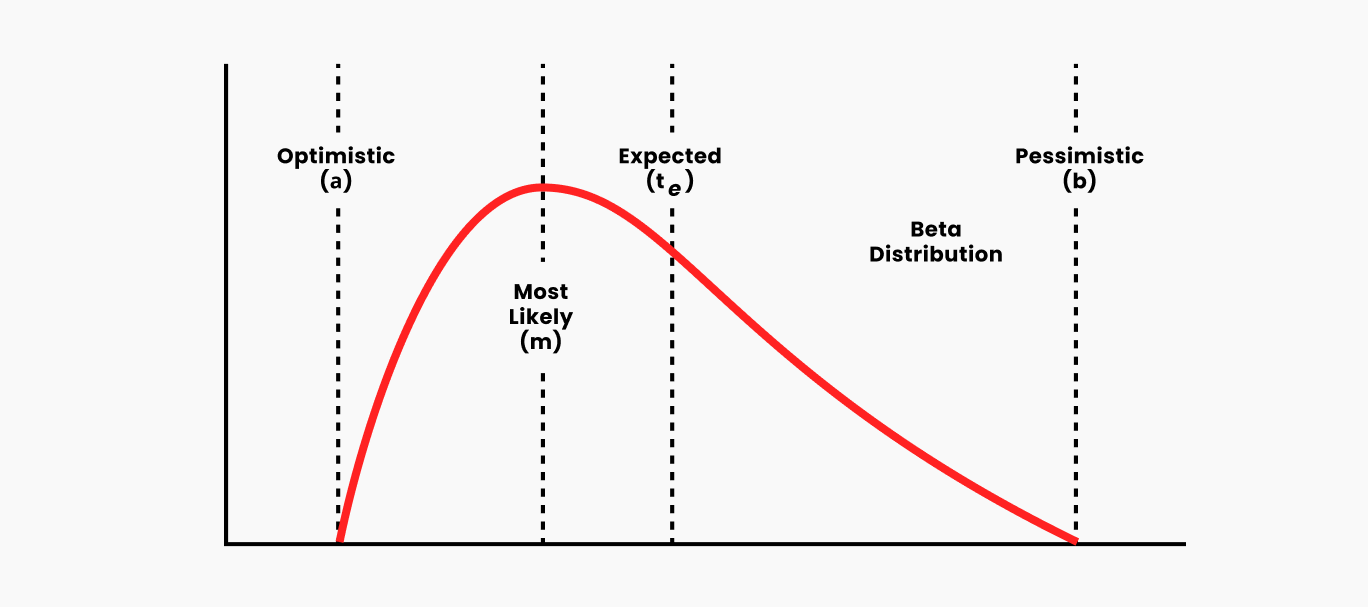
Advantages of Three-Point Estimation:
- Incorporates Uncertainty: Accounts for uncertainty and risk, leading to more realistic estimates.
- Improved Accuracy: Balanced estimates through a weighted average in the PERT formula.
Challenges and Mitigation Strategies:
- Data Collection: Use historical data and involve experienced team members and experts to provide informed estimates.
- Complexity: Provide training and tools to simplify the process and ensure all team members understand the methodology.
- Bias and Subjectivity: Use structured techniques like the Delphi method to gather and refine estimates, reducing individual bias.
5. Group Decision-Making
Group decision-making techniques harness the collective knowledge, experience, and creativity of a team to generate more accurate estimates, identify potential risks, and develop effective solutions. Key group decision-making techniques include brainstorming, which encourages free thinking and idea sharing without criticism, and the nominal group technique (NGT), which combines individual idea generation with group discussion and ranking.

Benefits of Group Decision-Making Techniques:
- Enhanced Creativity and Innovation: Involving diverse perspectives leads to more innovative solutions.
- Improved Accuracy and Reliability: Combining knowledge and experience results in more accurate estimates and decisions.
- Increased Buy-In and Commitment: Involving the team fosters a sense of ownership and commitment to project outcomes.
Challenges and Mitigation Strategies:
- Dominance by Vocal Participants: Use structured techniques like Poker Planning and Delphi to ensure equal participation.
- Time Consumption: Plan and schedule sessions efficiently to balance thoroughness with time efficiency.
- Groupthink: Encourage open dialogue, critical evaluation, and alternative viewpoints to avoid compromised critical thinking.
Here are two of the most popular techniques used for group evaluations:
5.1 Poker Planning
This is how Poker planning works: each participant is given a deck of cards, very similar to playing cards. Each card has a number on it. Every participant gets an identical deck of cards. Then the manager asks to estimate a task, but instead of speaking out loud, the participants place a card face down with their estimate, having previously agreed on what the number represents (hours, days, etc.).
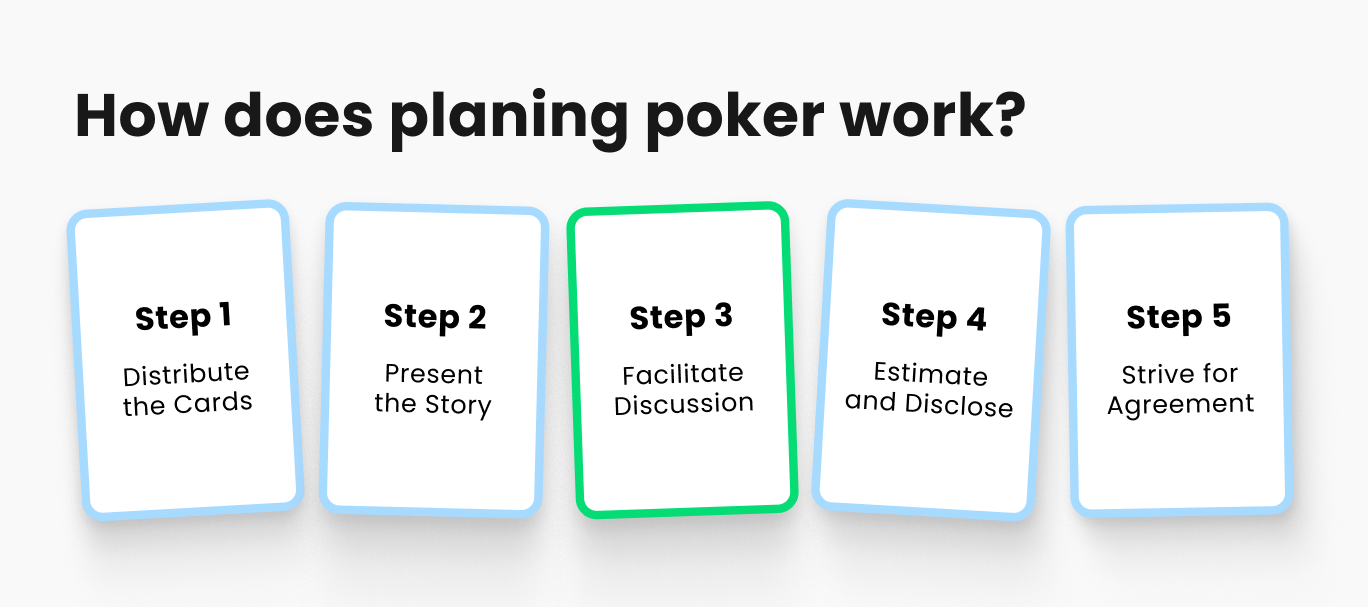
Next, we take the highest and lowest estimates and ask their authors to explain the reasons for such estimates. They might see risks that others haven't considered or know of a way to complete the work faster. After listening to the explanations, we ask the team to vote again. If there are still significantly different estimates, the round is repeated.
During poker planning, the estimates inevitably converge. The goal isn't to reach a single number but to bring the estimates closer together so we can proceed without further poker planning. However, poker takes a lot of time, so not all tasks can be estimated this way, only complex or large blocks of work.
5.2 Delphi Method
The Delphi technique is a similar method that addresses the same problem. The difference is that the survey is conducted anonymously. Participants understand what they are involved in, but they do not know which other experts are participating. It is usually conducted through correspondence.
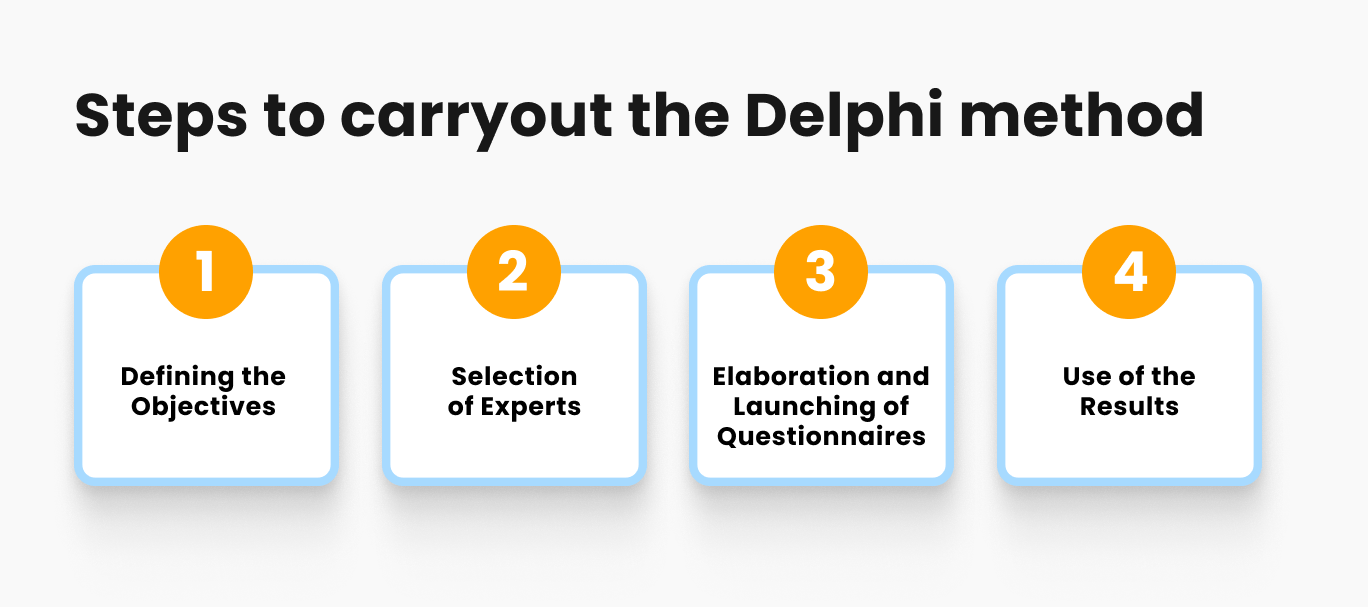
You find experts, invite independent experts to participate (they are usually not members of your team), send them a description of the task, and ask them to provide their estimates and comments. Then you share the estimates and comments with the other experts and ask if they want to adjust their initial estimate. Several rounds follow.
This technique is even slower and takes weeks. It is generally favored by builders, especially for projects with huge capital expenditures. If the project doesn't succeed, the money won't be recovered. The higher the risks, the more meticulously the company plans at the start.
6. Reserve Analysis
Reserve analysis involves identifying and allocating contingency and management reserves to address uncertainties and risks that could impact the project. This approach ensures that the project has adequate resources and time to deal with unforeseen events without compromising its overall objectives.
The steps involved in reserve analysis include identifying risks using techniques such as brainstorming, expert interviews, and SWOT analysis. Next, the risks are analyzed to assess their probability and impact, prioritizing them based on severity. Following this, reserve requirements are determined by calculating contingency and management reserves based on the risk assessments. These reserves are then allocated into the project budget and schedule, ensuring clear documentation.

Benefits of Reserve Analysis:
- Risk Mitigation: Preparedness and proactive management of uncertainties.
- Improved Project Control: Flexibility and increased stakeholder confidence.
- Enhanced Accuracy in Estimation: Comprehensive planning leads to more accurate and realistic estimates.
Challenges and Mitigation Strategies
- Accurate Risk Assessment: Use a combination of qualitative and quantitative risk analysis techniques.
- Allocation of Reserves: Base allocations on historical data and regularly review reserves.
- Management Approval: Establish clear policies and procedures for accessing reserves.
- Tracking and Utilization: Implement robust tracking systems and ensure transparency in reserve utilization.
Who Should Do Estimation?
Estimation should ideally be conducted by a team of individuals who have a deep understanding of the project's scope, requirements, and technical complexities. This team typically includes project managers, subject matter experts, senior developers, and other key stakeholders.
Project managers bring a broad perspective on timelines and resource allocation, while subject matter experts and senior developers provide insights into the technical aspects and potential challenges.

Project managers typically play the role of the owner of the project estimation process, although in some organizations, this responsibility may fall to a dedicated project estimator or a project management office (PMO).
When We Do Project Estimation?
Project estimation should be conducted at several key stages throughout the project lifecycle to ensure accuracy and alignment with evolving project details.
Stage 1. Project Initiation
Initially, estimation occurs during the project initiation phase, where high-level estimates are made based on the project’s scope and objectives to assess feasibility and secure approval.
Stage 2. Planning Phase
As the project progresses into the planning phase, more detailed and refined estimates that include detailed time, effort, and cost estimations are developed. They are essential for setting realistic expectations and ensuring resource availability.

- Time Estimations: Time estimation is the process of predicting the amount of time required to complete each task within the project. This involves breaking down the project into smaller, manageable tasks and assigning a duration to each. Techniques such as Work Breakdown Structure (WBS), Gantt charts, and Critical Path Method (CPM) are commonly used to visualize and sequence activities.
- Effort Estimations: Effort estimation focuses on the amount of work or human resources required to complete the project tasks. It involves calculating the person-hours needed for each task, taking into account the skill level and productivity of team members. Proper effort estimation ensures that the project team is neither underutilized nor overburdened, facilitating efficient workload distribution and resource management.
- Cost Estimations: Cost estimation is the process of forecasting the financial resources needed to complete the project. This includes direct costs like labor, materials, and equipment, as well as indirect costs such as overheads and contingency funds.
Stage 3. Project Execution
During project execution, continuous estimation is necessary to adjust for any changes in scope, unforeseen challenges, or new information that arises. Regularly revisiting and updating estimates ensures that the project remains on track and that any deviations are promptly addressed.
Steps for Project Estimation
Let’s see how to do project estimation with several structured steps to ensure accuracy and reliability.
Step 1. Define Project Scope
The process typically begins with defining the project scope, which includes understanding the project objectives, deliverables, and constraints. Next, gather detailed requirements to clarify what needs to be accomplished.
Step 2. Create Work Breakdown Structure (WBS)
Following this, break down the project into smaller, manageable tasks or components using a Work Breakdown Structure (WBS). This decomposition helps in identifying all necessary activities and their interdependencies.
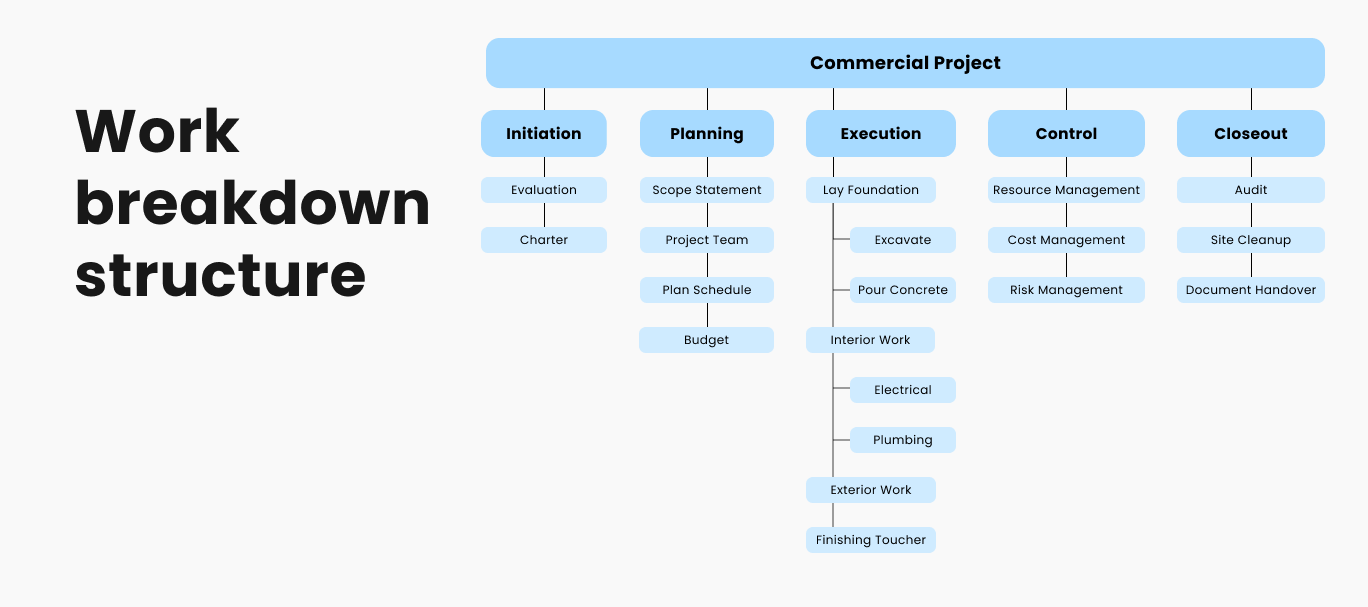
Step 3. Estimate Project
Estimate the effort required for each task by considering factors such as complexity, resources needed, and potential risks. Use estimation techniques like expert judgment, analogous estimating, or parametric estimating to derive these estimates. Read more about them below.
Once individual task estimates are obtained, aggregate them to form the overall project estimate. Incorporate contingencies to account for uncertainties and risks. Review and validate the estimates with stakeholders to ensure alignment and accuracy.
Step 4. Control and Monitor
Finally, continuously monitor and update estimates throughout the project lifecycle to reflect any changes in scope, requirements, or unforeseen challenges. This iterative approach ensures that the project stays on track and within budget.
Conclusion
In conclusion, project evaluation is a critical component of effective project management, offering a variety of techniques to improve planning, estimation, and risk management.
Expert judgment brings deep insights and speed, though it requires careful selection and mitigation of biases. Analogous estimation offers rapid and historical data-informed estimates, while parametric estimation provides precision through statistical models. Three-point estimation incorporates uncertainty for realistic forecasts, and group decision-making harnesses collective knowledge for innovative solutions. Reserve analysis ensures preparedness for unforeseen events, bolstering project control.
Understanding these techniques and their respective advantages and challenges empowers project managers to choose the most suitable methods for their projects, ultimately leading to more successful project outcomes.


